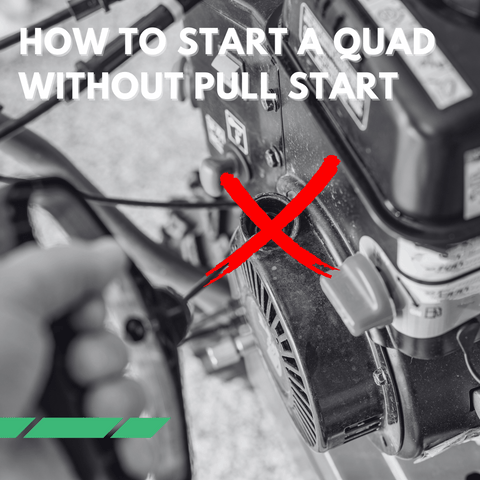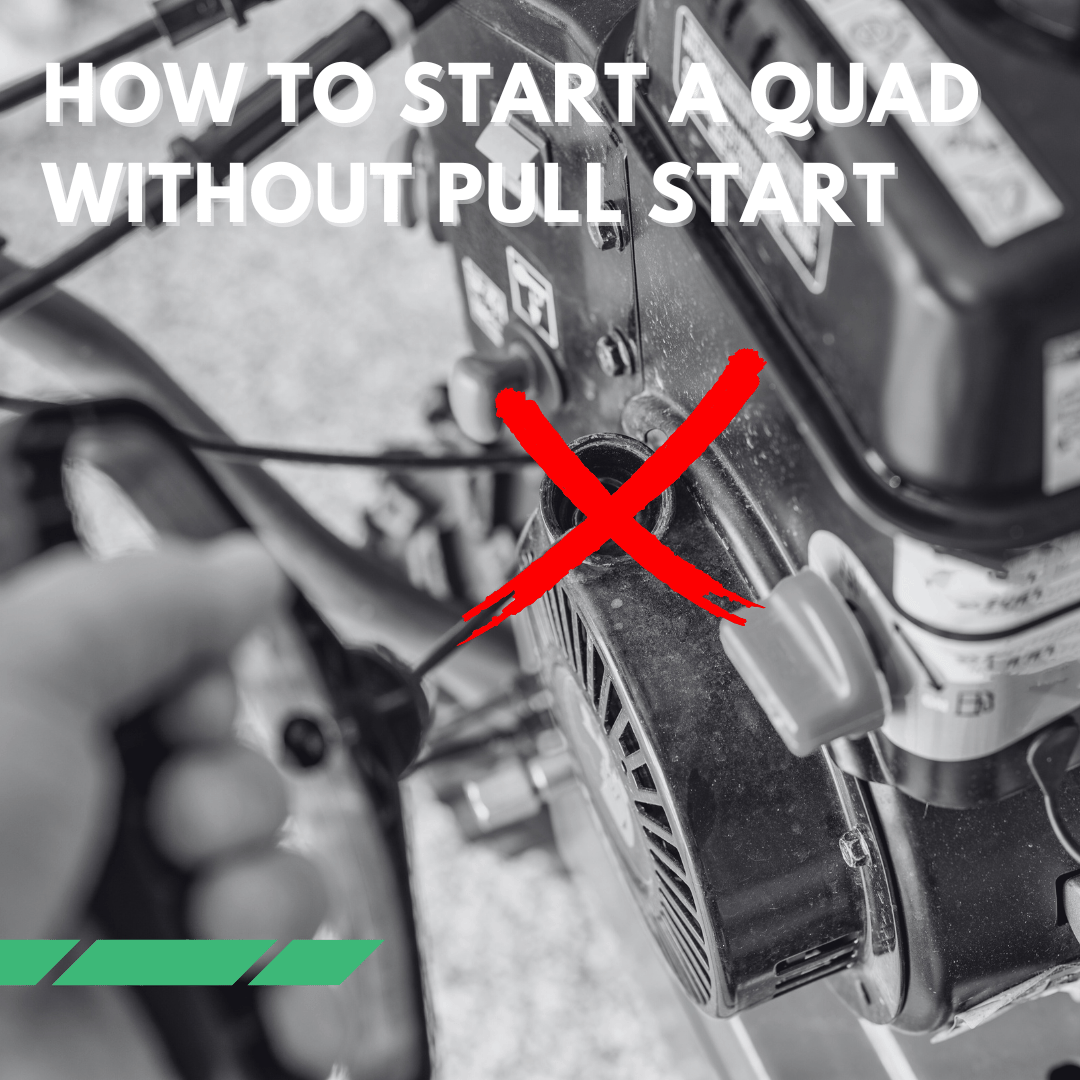Venturing into the wilderness with your quad for an adrenaline-fueled journey, only to find the pull start mechanism refusing to cooperate, can put a damper on your adventure.
But worry not! 
This guide, along with other quad riding techniques, will help you navigate this predicament and teach you how to start a quad without a pull start.
Keep reading, and you'll be back on the trail in no time!
The Essentials of Quad Starting Mechanisms
Understanding Pull Start Mechanism
The pull start mechanism, or recoil start, operates on a simple principle.
When you pull the start cord, it engages the engine's flywheel, spinning the crankshaft, moving the pistons, and igniting the combustion process.
However, if this fails, you need to have some alternative methods on hand.
Alternatives to Pull Start
The crucial aspect here is to turn over the engine, and there are several ways to achieve this.
These include using a drill, push starting, a reverse drill start, rope starting, and bump starting.
Step-by-Step Guide to Quad Starting Methods Without Pull Start
Using a Drill
A power drill can act as a savior when your quad's pull start fails. Here's how to do it safely:
Tools and Equipment Needed:
- Power drill (18V or higher recommended)
- Socket set with the correct size for your crankshaft nut
- Protective gloves
- Safety goggles
Steps:
- Locate a socket that fits the nut on the crankshaft.
- Securely attach the socket to the drill.
- Ensure the quad is in neutral and the parking brake is engaged.
- Wear protective gloves and safety goggles.
- Hold the drill firmly with both hands to maintain control.
- Switch on the drill and apply steady pressure.
Safety Warning: Always use the correct socket size to prevent stripping the nut. Keep fingers and loose clothing away from moving parts to avoid entanglement.
Potential Problems and Troubleshooting
Maintenance Tips to Prevent Pull Start Failures
Safety Tips and Precautions
Safety should always come first. Ensure you're wearing protective gear and consult your quad's manual for specific instructions or precautions.
Not all methods are suitable for all quads, so it’s crucial to understand your vehicle's specifics.
Before purchasing a quad, always refer to a comprehensive buyer's guide and know where you can ride your quad safely in the UK.
In Summary
The next time your quad’s pull start decides to act up, you’ll be well-prepared.
With these handy alternatives and the help of the guide provided by RiiRoo, you’ll find yourself back on the track sooner than you thought. Remember, every problem has a solution.
Happy riding and exploring!
Frequently Asked Questions
Why does my quad's pull start mechanism fail?
Pull start failures often result from wear and tear on the recoil spring, cord, or internal components. Regular maintenance and timely replacements can prevent these issues.
Are there electronic alternatives to start my quad if the pull start fails?
Yes, some quads feature an electric start system as an alternative to the pull start, depending on the model and make of your quad.
What is the typical lifespan of a pull start mechanism?
The lifespan of a pull start mechanism varies based on usage and maintenance. With regular use and proper care, it can last several years, though harsh conditions or neglect can shorten its life.
Can I use these methods on any quad model?
Not all methods are suitable for every quad. Check your quad’s manual to confirm compatibility, as engine design and features vary by model.
What should I do if none of these methods work?
If none of these methods succeed, there may be a deeper mechanical issue (e.g., a seized engine or faulty ignition). Consult a professional mechanic for a thorough inspection.






Share:
Why Does My Go-Kart Clutch Smoke? (UPDATED 2025)
Common Quad Pull Start Issues & Solutions (UPDATED 2025)